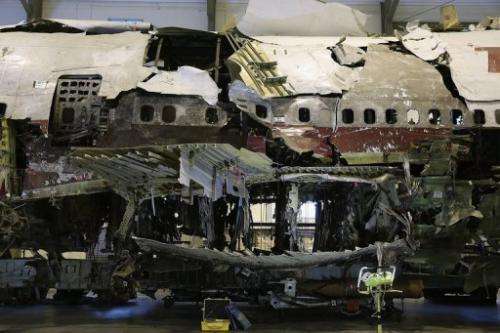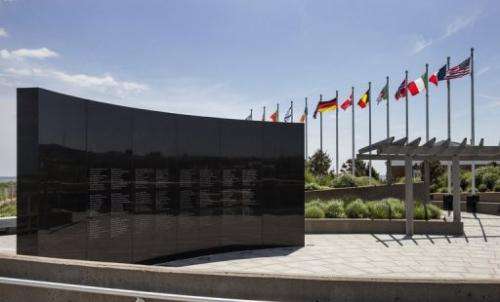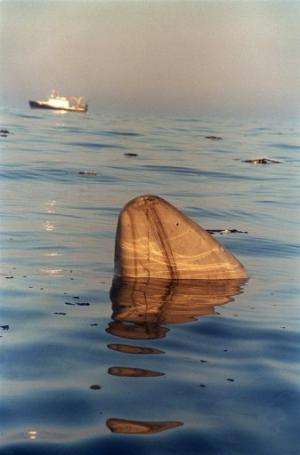Investigators stand by TWA Flight 800 explosion theory

US aviation investigators stood by their verdict that a fuel tank explosion brought down TWA Flight 800 in 1996, ahead of a documentary that revives speculation of a missile hit.
Some 230 passengers and crew died when the Boeing 747, en route to Charles de Gaulle airport in Paris, exploded in the night sky off Long Island, shortly after it took off from New York's John F. Kennedy airport.
"TWA Flight 800," a documentary to run on US cable channel Epix on July 17, the 17th anniversary of the disaster, reopens the argument that the jumbo jet was blown out of the sky by a missile.
But senior officials at the National Transportation Safety Board (NTSB) said a missile was just one of many theories that it thoroughly examined and dismissed during an exhaustive four-year investigation.
"We went to the nth degree, and then some," Joseph Kolly, director of the NTSB office of research and engineering, told reporters at the federal agency's training academy outside Washington.
"I'm totally convinced there was no bomb or missile," added Jim Wildey, a retired NTSB investigator who oversaw a detailed analysis of the sequence of events surrounding the disaster.
The fuselage of the ill-fated airliner, painstakingly reassembled at the NTSB academy where it now serves as a training aid, shows "no pitting, cratering, gas-washing or petalizing"—all telltale signs of a missile strike, he said.
Streaks of light, reported by dozens of witnesses on the ground, were in fact blazing fragments of the Boeing 747 falling nearly 15,000 feet (5,000 meters) into the Atlantic Ocean, Kolly said.
Moreover, investigators conducted a raft of surface-to-air missile simulations, but concluded it was "extremely unlikely" that Flight 800 had been hit by such a device, he added.
The NTSB maintains that TWA Flight 800 was brought down by a fuel vapor explosion, "most likely" ignited by an electrical short circuit, within an empty fuel tank between the wings and under the main passenger cabin.

Kolly did not comment on a petition now before the NTSB, prompted by "TWA Flight 800," asking for the investigation to be reopened. The board is due to rule on the request later this summer.
But, referring to the documentary, he said: "I am upset about bringing this back up... It's just not a good thing."
Overshadowed by the September 11 attacks in 2001, the loss of TWA Flight 800 prompted major investigations not only by the NTSB, but also the Federal Bureau of Investigation (FBI) which pursued the notion of a terrorist attack.
The FBI wrapped up its criminal investigation in November 1997.
The NTSB imposed strict guidelines on Tuesday's briefing, instructing reporters not to record it or to photograph Kolley and his colleagues. Reporters were also shown only the right side of the reconstructed fuselage.
But it did allow some of the "TWA Flight 800" filmmakers, including co-producer and physicist Tom Stalcup, to conduct interviews in the rain-slicked parking lot.
Stalcup told AFP that the NTSB has never determined the precise source of the spark that triggered the fuel tank explosion—"they admit it"—and that radar data refutes its findings.
"They say it's a low-velocity explosion. The radar says it was a high velocity explosion. You cannot have both. It's impossible... A low-velocity explosion cannot create high-level debris," he said.
He suspects the airliner was targeted not with a shoulder-mounted missile, but with a "proximity fuse missile" which detonates close to its target and destroys it with flak and shockwaves.

Hank Hughes, a retired NTSB investigator who petitioned for the case to be reopened, said there had been "lots of missteps, lost of incorrect things" during the course of the investigation.
"There were many many positive hits for nitrates and other explosives" said Hughes, referring to forensic tests for trace evidence of explosive substances on the debris.
Kolley said only three pieces of debris tested positive for explosives, something put down in part on the fact that the aircraft had once been used for training police sniffer dogs.
Hughes was in charge of setting up the hangers on Long Island where the debris was gathered after being salvaged from the sea bed.
Two relatives of those who died in the disaster attended Tuesday's briefing, sitting in the back of the auditorium. Speaking to reporters afterwards, they sided with the NTSB's version.
"I don't understand the point of bringing up old conspiracy theories that have already been tested and vetted," said Matt Ziemkiewicz, whose sister Jill, 23, was a rookie flight attendant working her first international flight.
"There are still family members who believe it was brought down by a bomb," added Jim Hurd, whose son Jamie was en route to Paris on holiday. "I respect their thoughts... It's what they want to believe."
© 2013 AFP


















